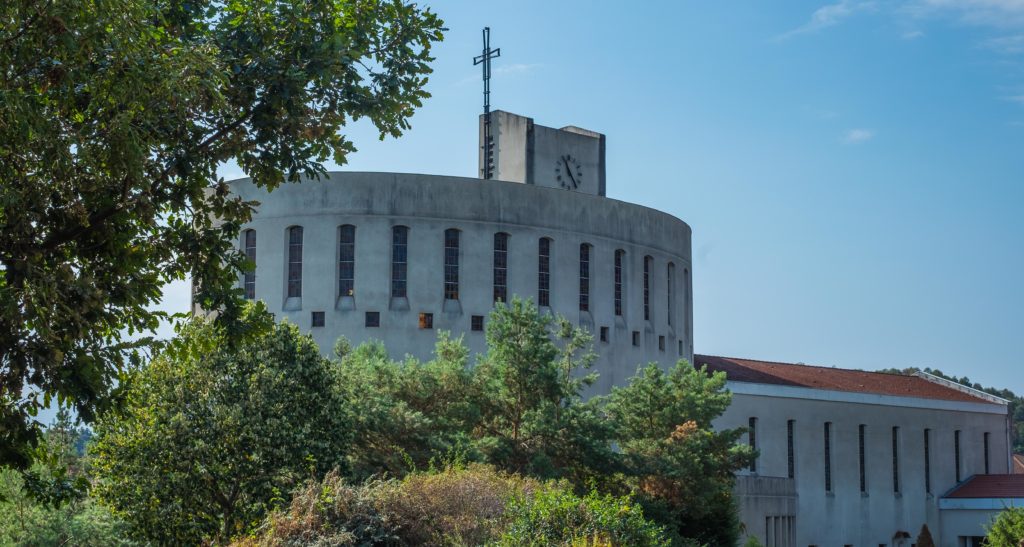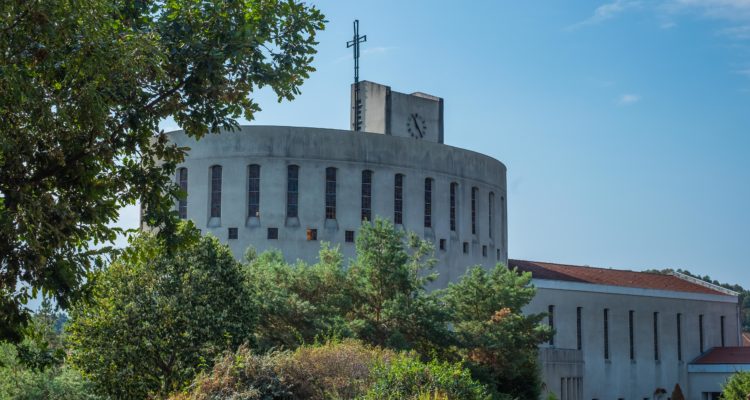A complicated subject
Religion – a tricky subject anywhere in the world – can be especially difficult to bring up in France. There’s a broad perception (based on dozens of polls - the French seem to like contemplating this question) that France is now a mostly secular society, and that the massive influence of the Catholic church from the Middle Ages to the Revolution is mostly a historical relic. There are thousands of ancient churches and crumbling old abbeys, but it seems rare to see a new one. That’s why, when Karen mentioned the visit she made with her women’s group to a 20th-cenury abbey at Randol, we decided we had to go back there together to learn more about what was going on.
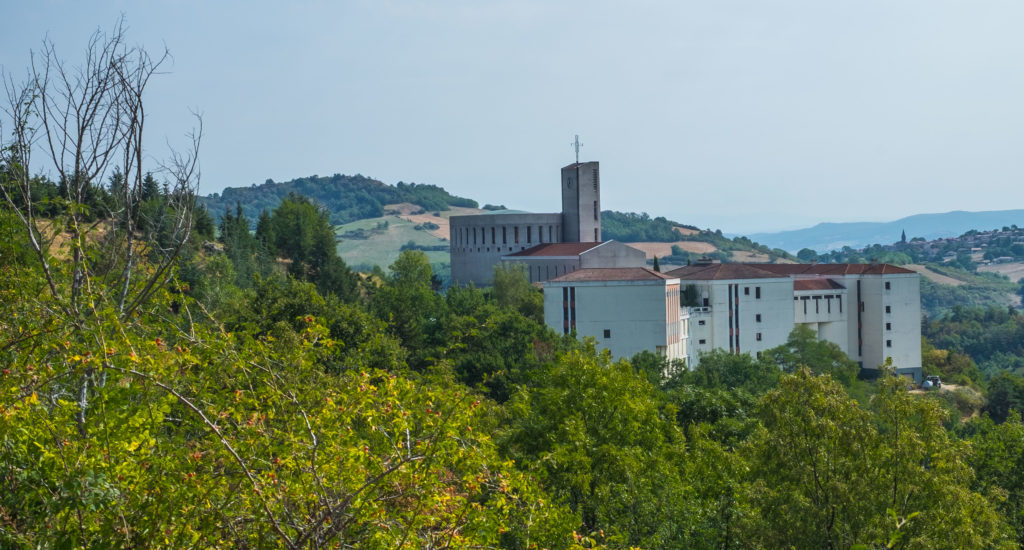
A 20th-Century Abbey
Although it was built from 1969 to 1981 in a strikingly contemporary style (“resolutely modern”, according to the monks), Notre Dame de Randol shares some important characteristics of medieval abbeys like the ancient ones in La Chaise Dieu or Lavaudieu:
- It’s isolated in the volcanic mountain range of France’s Massif Central. True, it’s only 35 minutes south from Clermont-Ferrand (and you have to pass through the royal village of Saint Saturnin to get there), but as you walk the trails around the abbey you are surrounded in an other-worldly quiet and the wild beauty of the Cantal.
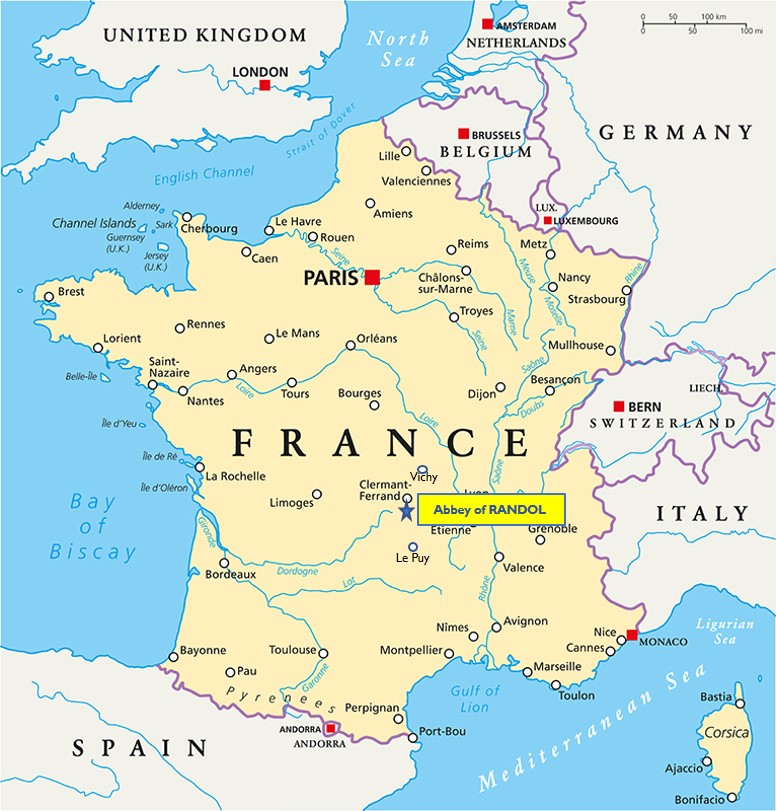
- The monks here are Benedictines, and they live strictly according to their motto, ora et labora (“pray and work”). Like many other working abbeys, they produce and sell a lot of agricultural and craft products – in the case of Randol, sheep skins, raw wool, wild honey, fruit candies, and cheese.
- The “pray” part of the Benedictine motto follows forms that have been practiced for 1,500 years – the day is divided into sections (Matins, Prime, Tierce, Sexte, None, Vespers, and Complies) with ritual services from 4:55 in the morning until 8:05 at night.
- The monastery is a little unusual among contemporary groups in that they continue to observe the rites of Catholic worship in Latin, and the monks here are well known for maintaining their skills in ancient Gregorian chant. (And add to the list of “traditional” products they sell in the abbey’s gift shop: a variety of CDs of their chants for the major church holidays.)
VIDEO: Life in the Abbey at Randol
(If you’re interested in what life is like for a Benedictine monk in a remote corner of France, here’s a fine short film by Christophe Deat from YouTube that traces their daily activities from wake-up to the “grand silence of the night”.)
The village next door
We arrived at Notre Dame de Randol while a service was going on, so we set out first along the trails that connect the monastic building complex to its little “support” village, the commune of Cornols. It’s a tiny hamlet, much older than the abbey, inhabited year-round by about 230 people who work mostly in local farming or support roles for the monastery next door. It’s being progressively renovated, though, to include a dozen or so gites (B&B-type room rentals) which people can rent for family vacations in the summers or private retreats on their own. To help maintain the quiet, only monks and vacationers are allowed to have cars inside the commune’s city limits.
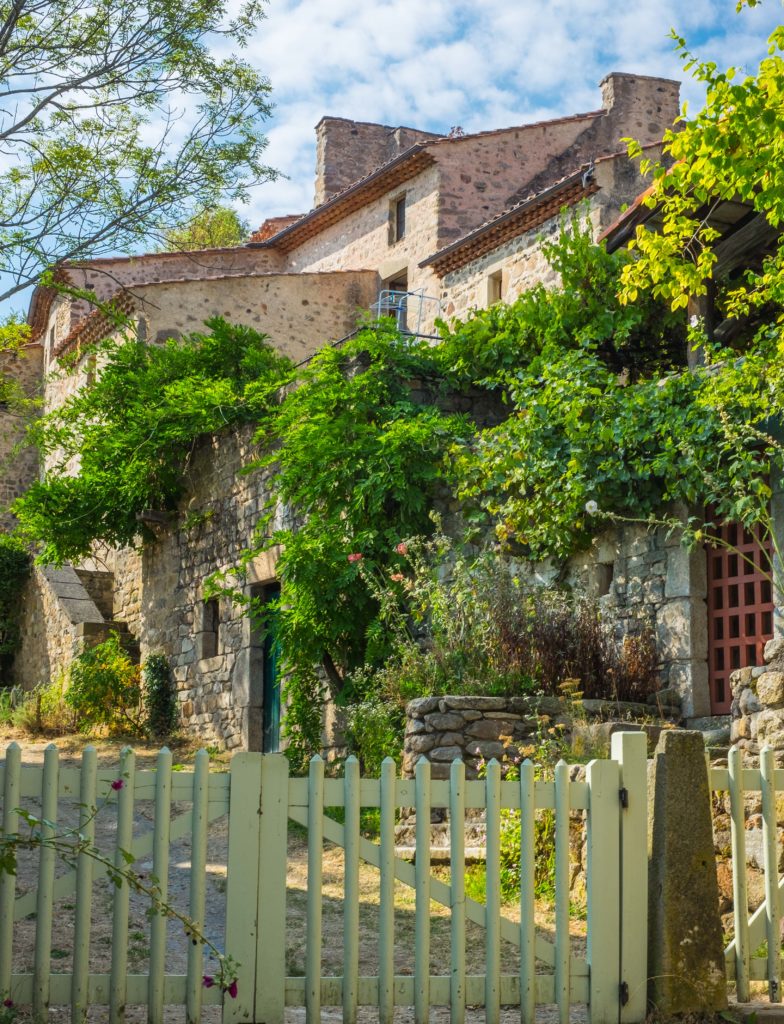
The abbey church
We knew that the service had ended when we met a monk on a motorcycle, his robes flying out behind him, then a little Fiat with 3 monks inside headed back to Cournols, so we returned to visit the church. It’s strikingly plain, but very elegant in its design, with modern stained-glass windows and a high vault letting in the bright light of the sun. The smell of incense burned during the service still hung in the air, but a few visiting worshipers were already lined up at the gift shop in the lobby to buy a CD, a book, or one of the monastery’s products.
Anyone who knows me knows the monastic life is not for me! Still, I have a great deal of respect for the men and women who choose this life of reflection and service – and the self-discipline that necessarily goes with that. As Karen and I walked the trail between Cornols and Notre Dame de Randol, it was natural that we should stop, look out across the broad valley toward St. Saturnin, and listen to the silence in this place that embodies, for me, the “deep heart of France”!
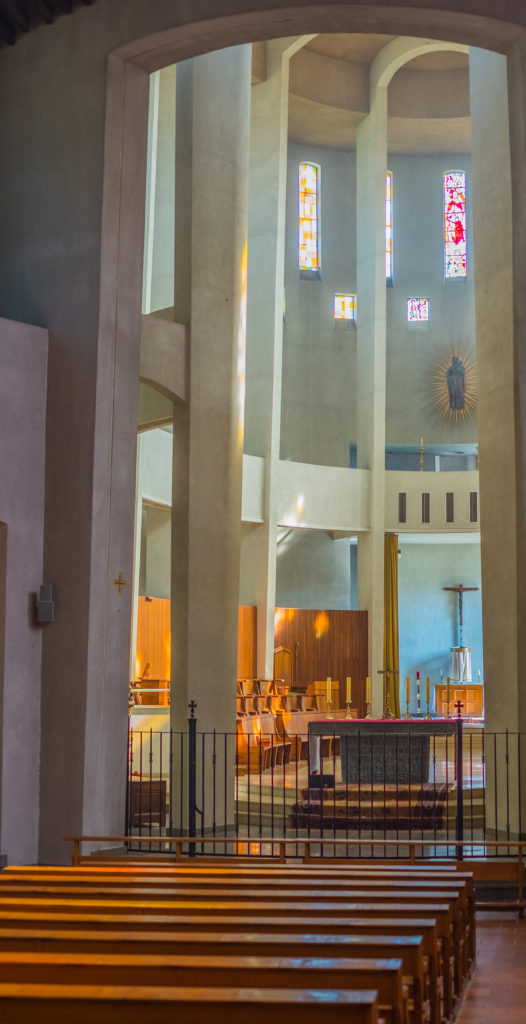
Have you discovered a place like this anywhere else in France? Is there someplace you particularly like to go for quiet and reflection? Please tell us about it in the comments section below. And, as always, I’d be grateful if you’d take a second to click on the button for your preferred social-media forum to share this article with others!
